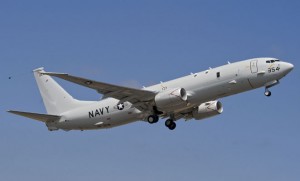Boeing has announced it completed full scale static testing for the P-8A Poseidon’s airframe on January 7, confirming the airframe’s structural integrity.
The series of trials, which began in May 2009, saw 154 different tests conducted on ‘S1’, the program’s full-scale static ground test vehicle, in which it sustained loads equal to or greater than those expected to occur during operational flights, with no failure of the primary structure. During 74 of the tests, the S1 airframe was subjected to 150 per cent of the highest expected flight loads. More than 4000 installed strain gages and calibrated parts captured data for analysis.
“The structure performed as we expected throughout testing, allowing us to efficiently expand the P-8A’s flight test envelope,” Boeing vice president and P-8 program manager Chuck Dabundo said.
The S1 airframe will be refurbished from September this year for live-fire testing at the Naval Air Warfare Center, China Lake, California. Boeing will begin fatigue tests on its second ground-test vehicle, S2, later this year.
The US Navy plans to purchase 117 P-8A anti-submarine warfare, anti-surface warfare, intelligence, surveillance and reconnaissance aircraft to replace its maritime surveillance P-3 fleet, with initial operational capability (IOC) planned for 2013.















